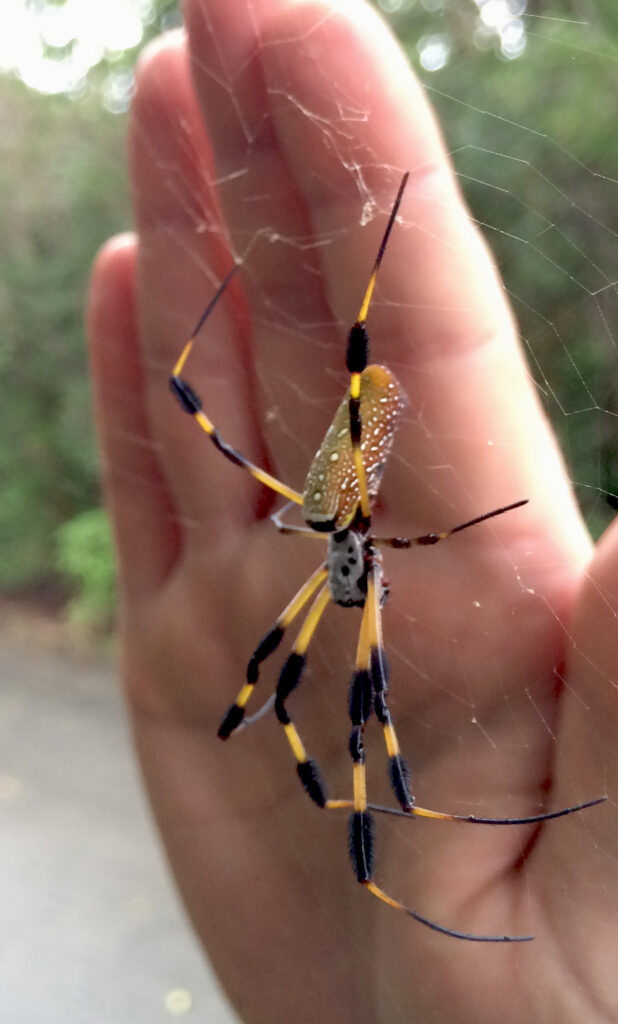Giant, Flying Spiders
This week, I have been combatting the clickbait news which has made it seem like giant, venomous spiders are going to drop from the sky. Here are a few things to note:
 Almost all spiders have venom. It’s what they use to eat. Only a small number of spiders have medically significant venom.
Almost all spiders have venom. It’s what they use to eat. Only a small number of spiders have medically significant venom. Quite a few spider species use ballooning as a dispersal method. It’s so common that it was featured on Charlotte’s Web.
Quite a few spider species use ballooning as a dispersal method. It’s so common that it was featured on Charlotte’s Web. Most spiders are shy and want nothing to do with you. Sorry, you’re not that special. In fact, you actually are SCARY to many spider species.
Most spiders are shy and want nothing to do with you. Sorry, you’re not that special. In fact, you actually are SCARY to many spider species.

Here is what is true:
 The Joro spider has been in the US for at least 11 years and recently has been documented in MD.
The Joro spider has been in the US for at least 11 years and recently has been documented in MD. It has venom, but the venom is not medically significant. Furthermore, they are shy spiders that are loathe to bite.
It has venom, but the venom is not medically significant. Furthermore, they are shy spiders that are loathe to bite. Only the tiny spider hatchlings use ballooning to get around. The adults are too heavy. I can guarantee that you have had spiderlings fly past you on multiple occasions which you never noticed.
Only the tiny spider hatchlings use ballooning to get around. The adults are too heavy. I can guarantee that you have had spiderlings fly past you on multiple occasions which you never noticed.
To provide some more context, ballooning, also known as kiting, is a method by which spiders and some small invertebrates travel through the air by releasing silken threads to catch the wind, allowing them to become airborne and be carried by air currents and electric fields. A 2018 study found that electric fields can lift spiders and may trigger this behavior. While primarily used by spiderlings for dispersal, [very] occasionally, larger spiders also engage in ballooning. Spiders will climb to a high point, raise their abdomens, and release fine silk threads until they become airborne. They can use this method to travel a few feet to a few miles. Some spiders have also been found miles away from land, out in the middle of the ocean! Pretty impressive for butt swings, if I do say so myself.
I have spent a lot of time personally and professionally working with spiders and always come away in awe at this fascinating and resilient group of animals. In my 20 or so years of handling spiders (I had a number of years where I had a healthy fear of them), I have only been bitten once. It was a male rabid wolf spider (an unfortunate name for a spider) that was threatened by me trying to shoo him off the patio so my guests didn’t step on him.
Overall, Joros are here to stay. Whether or not they become invasive in our area is still in need of more data. So, let’s embrace facts over fear and remember that only tiny spiders drop from the sky. 